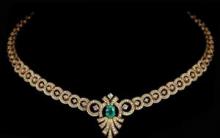In a home workshop, it is desirable to have the simplest desktop machines - drilling, grinding, etc. But if you need to perform precise work, then you can not do without a milling unit. To do this, you can make a simple CNC with your own hands. This can be done in two ways:
A homemade CNC machine is necessary for precise drilling or cutting, as well as turning parts.
- buy a kit for the manufacture of a similar design;
- make such a cutter yourself.
The first way is associated with certain financial costs. Branded machines for home use have a relatively high price and not everyone can afford.
CNC requires certain knowledge and possession of the tool to create it.
Where to start designing a homemade router?
First you need to choose a suitable unit scheme. As a basis, you can take the usual drilling machine, but instead of a drill, use a cutter as a working tool. Naturally, it will be necessary to think over the mechanism of its movement in three planes. Usually, for small units, redesigned carriages from the printer are used, with the help of which the working tool can move in two planes. This is also beneficial in terms of connecting software to work in automatic mode. But such designs have one drawback - they allow you to process wood, plastic and thin sheets metal (1-2 mm).

Therefore, for more serious CNC work, the router must have stepper motors with increased power. They can be made by modifying standard electric motors of this class, which will allow us to abandon the use of a screw transmission while maintaining all its advantages. To transfer force to the shaft, it is best to use toothed belts.
When using homemade carriages to move the working tool, you can use parts from large printers. One of the improvised designs of a similar type.
Back to index
Making a CNC router on your own
This machine in its design resembles samples of industrial units. Its basis is a low beam of rectangular section, directly fixed on the rails. This allows you to get the desired rigidity of the structure and minimize welding work when creating a cutter.
A metal square pipe with a side of 75-85 mm was taken as the basis. For fastening to the guides, it is necessary to use soles of a rectangular type 65 x 25 mm. This allows you to abandon welding at this stage of work and will help with fine-tuning the router. This is also necessary for the correct setting of angles of 90 degrees. The main beam and the sole are connected using 4 M6 screws, which must be tightened to the stop in order to obtain the desired rigidity. This will eliminate the backlash, although deflection of the guides under heavy load and malfunctions in the plain bearings are possible (you can use any suitable ones, even Chinese ones).

The vertical lifting of the working tool is carried out using a screw gear, and a toothed belt is used to return rotation to the lead screw. This makes it possible to avoid beats, lower the center of gravity of the unit and save space. The vertical axis itself is made of aluminum plate. It must be processed on a milling machine according to the dimensions needed for homemade machine. If there is a muffle furnace in the home workshop, then it can be cast from aluminum.
Behind the axis, two stepper motors must be installed: the first rotates the lead screw for vertical displacement, and the second provides horizontal movement. Rotation is transmitted by belts. Some parts must be ordered from a turner if you do not have your own lathe.
After the manufacture of all elements and assembly, it is necessary to check the CNC router in operation, using manual control. After that, you need to deal with stepper motor controllers and software. If there is no relevant knowledge, then you can contact a company that has good programmers on staff.
You may also need a metal frame or artificial stone, which is better to order according to the desired size.
Back to index
What stepper motors can a homemade CNC have?
These are the most important elements future cutter.

In order to get such electric motors, it is necessary to disassemble old dot matrix printers (for example, Epson). Inside such machines there are two stepper motors and good hardened steel rods. To build a router, you need to have 3 electric motors, so you have to disassemble 2 printers.
In order to simplify the production of operations on a homemade machine, it is best to use motors with 5-6 control wires: they have good torque and are easy to work with. For the correct software setting, you need to know the number of their degrees per step, the operating voltage and winding resistance.
To drive a homemade CNC, a nut and a stud are usually used. To fix the shaft of a stepper motor, a piece of thick-walled rubber cable is usually used; with its help, the electric motor is attached to the stud. Self-made bushings with a screw are used as clamps. They are made of nylon, using a drill and a file.
Knowing that a CNC milling machine is considered sophisticated technical and electronic equipment, many craftsmen think that it simply cannot be done by hand.
However, this opinion is not true: you can make such a device with your own hands, but for this you need to have not only its complete drawing, but also a set of certain tools and suitable components.
DIY CNC machine (drawings)
Deciding to create a homemade special machine CNC, remember that this can take a long time. In addition, you will need a lot of money.
To make a milling machine that is equipped with a CNC system, you can use 2 methods: purchase a ready-made set of specially selected parts from which such equipment is assembled, or find all the components and independently assemble a device that fully meets all your requirements.
Preparation for work
If you planned to make a CNC machine yourself without using a ready-made kit, then the first thing you will need to do is stop at special scheme, on which such a mini-device will work.

Equipment assembly
The basis of the assembled milling equipment can be a rectangular beam, which must be firmly fixed on the rails.
 The supporting structure of the equipment must have high rigidity. When installing it, it is better not to use welded joints, but to attach all parts only with screws.
The supporting structure of the equipment must have high rigidity. When installing it, it is better not to use welded joints, but to attach all parts only with screws.
In milling equipment, which you will assemble yourself, a mechanism must be provided that will ensure the movement of the working device in the vertical direction. It is best to take a screw gear for it, the rotation of which will be transmitted using a toothed belt.
The main part of the machine
An important part of such a machine is its vertical axis, which for a home-made device can be made from an aluminum plate. Remember to the dimensions of such an axis were precisely matched to the dimensions of the device being created.
The aim of this project is to create a desktop CNC machine. It was possible to buy a ready-made machine, but its price and dimensions did not suit me, and I decided to build a CNC machine with the following requirements:
- usage simple tools(only need a drilling machine, band saw and hand tools)
- low cost (I was looking for low cost, but I still bought items for about $600, you can save a lot by buying items in the appropriate stores)
- small footprint(30"x25")
- normal workspace(10" X, 14" Y, 4" Z)
- high cutting speed (60" per minute)
- a small number of elements (less than 30 unique)
- available elements (all elements can be bought in one hardware and three online stores)
- the possibility of successful processing of plywood
Other people's machines
Here are some photos of other machines that have been assembled according to this article

Photo 1 - Chris and a friend assembled the machine by laser-cutting parts from 0.5" acrylic. But everyone who has worked with acrylic knows that laser cutting that's good, but acrylic doesn't handle drilling well, and there are a lot of holes in this project. They did Good work, more information can be found on Chris's blog. I especially liked making a 3D object with 2D cuts.

Photo 2 - Sam McCaskill did a really good job desktop machine with CNC. I was impressed that he did not simplify his work and cut out all the elements by hand. I am impressed with this project.

Photo 3 - Angry Monk's used DMF parts cut with a laser cutter and toothed belt driven motors converted to propeller motors.

Photo 4 - Bret Golab's assembled the machine and set it up to work with Linux CNC (I also tried to do this, but I couldn't because of the complexity). If you are interested in his settings, you can contact him. He did a great job!
I'm afraid I don't have enough experience and knowledge to explain the basics of CNC, but the CNCZone.com forum has an extensive section on homemade machines, which helped me a lot.

Cutter: Dremel or Dremel Type Tool
Axes options:
X axis
Travel Distance: 14"
Speed: 60"/min
Acceleration: 1"/s2
Resolution: 1/2000"
Pulses per inch: 2001
Y-axis
Travel Distance: 10"
Drive: Toothed belt drive
Speed: 60"/min
Acceleration: 1"/s2
Resolution: 1/2000"
Pulses per inch: 2001
Z-axis (up-down)
Travel Distance: 4"
Drive: Screw
Acceleration: .2"/s2
Speed: 12"/min
Resolution: 1/8000"
Pulses per inch: 8000
Required Tools
I aimed to use popular tools that can be purchased at a regular craft store.

Power tool:
- band saw or jigsaw
- drilling machine (drills 1/4", 5/16", 7/16", 5/8", 7/8", 8mm (about 5/16")), also called Q
- a printer
- Dremel or similar tool (to be installed in the finished machine).
Hand tool:
- rubber hammer (for planting elements in place)
- hexagons (5/64", 1/16")
- screwdriver
- glue stick or spray glue
- Adjustable wrench (or socket wrench with ratchet and 7/16" socket)
Necessary materials
The attached PDF file (CNC-Part-Summary.pdf) provides all costs and information about each item. Only summarized information is provided here.

Sheets---$20
- A piece of 48"x48" 1/2" MDF (any sheet material 1/2" thick. I plan to use UHMW in the next version of the machine, but now it is too expensive)
- A piece of 5"x5" 3/4" MDF (this piece is used as a spacer so you can use any 3/4" piece of material)
Motors and controllers --- $255
-A whole article can be written about the choice of controllers and motors. In short, you need a controller capable of controlling three motors and motors with about 100 oz/in torque. I bought motors and a ready-made controller and everything worked well.
Hardware --- $275
-I bought these items in three stores. I got the simple parts from the hardware store, the specialized drivers I got from McMaster Carr (http://www.mcmaster.com), and the bearings, which I need a lot, I bought from an online retailer for $40 for 100 pieces (it's quite a bargain). , many bearings remain for other projects).
Software --- (Free)
-You need a program to draw your design (I use CorelDraw) and now I use trial version Mach3, but I have plans to switch to LinuxCNC (an open source machine controller using Linux)
Head Unit --- (Optional)
-I installed Dremel on my machine, but if you are interested in 3D printing (like RepRap) you can install your device.
Printing templates
I had some experience with a jigsaw, so I decided to glue on the templates. It is necessary to print PDF files with templates placed on the sheet, stick the sheet on the material and cut out the details.

File name and material:
All: CNC-Cut-Summary.pdf
0.5" MDF (35 8.5"x11" template sheets): CNC-0.5MDF-CutLayout-(Rev3).pdf
0.75" MDF: CNC-0.75MDF-CutLayout-(Rev2).pdf
0.75" aluminum tube: CNC-0.75Alum-CutLayout-(Rev3).pdf
0.5"MDF (1 48"x48" pattern sheet): CNC-(One 48x48 Page) 05-MDF-CutPattern.pdf
Note: I am attaching CorelDraw drawings in original format (CNC-CorelDrawFormat-CutPatterns (Rev2) ZIP) for those who would like to change something.
Note: There are two options for MDF 0.5". MDF-CutPattern.pdf) with one 48"x48" sheet for printing on a large format printer.
Step by step:
1. Download three PDF templates.
2. Open each file in Adobe Reader
3. Open the print window
4. (IMPORTANT) Disable Page Scaling.
5. Check that the file has not been scaled by accident. The first time I did not do this, and printed everything at a scale of 90%, as described below.
Gluing and cutting elements
Glue the printed templates on the MDF and on the aluminum pipe. Next, just cut out the part along the contour.



As mentioned above, I accidentally printed the templates at 90% scale, and did not notice this until I started cutting. Unfortunately, I did not understand this until this stage. I was left with 90% scale templates and moving across the country I got access to a full size CNC. I could not resist and cut out the elements with this machine, but I could not drill them with reverse side. That is why all the elements in the photos are without template pieces.

drilling
I didn't count exactly how many, but this project uses a lot of holes. The holes that are drilled on the ends are especially important, but take the time to make them, and you will rarely need to use a rubber hammer.
Places with holes in the lining on top of each other is an attempt to make grooves. Perhaps you have a CNC machine that can do this better.
If you have reached this step, then I congratulate you! Looking at a bunch of elements, it is quite difficult to imagine how to assemble a machine, so I tried to make detailed instructions similar to LEGO instructions. (attached PDF CNC-Assembly-Instructions.pdf). The step-by-step photos of the assembly look quite interesting.



Ready!
The machine is ready! I hope you made and run it. I hope the article is not missing important details and moments. Here is a video that shows the machine cutting a pattern on pink foam.

For many home craftsmen, it may seem that this is somewhere on the verge of fantasy, since this equipment is a device that is complex in design, technical and electronic terms.
Meanwhile, having the appropriate drawings at hand, the entire necessary material and a tool, a mini home-made woodworking machine equipped with CNC, you can do it yourself.
Of course, for this you will have to spend some effort, including financial ones, but nothing is impossible, and if you approach this issue correctly and with skill, everyone can do a home-made desktop milling machine for mini wood with a CNC unit. House master.
As you know, such a mini unit for wood is distinguished by the accuracy of the processing, ease of control of all work processes, as well as the high quality of the finished product.
Currently, there are several ways to implement a home-made desktop CNC milling machine in a mini version for working on wood and other materials.
First of all, you can purchase a special kit for assembling this type of structure, or you can do all the necessary work yourself, getting a finished product with high quality processing at the output.
If the decision is made necessary work to design and assemble a mini desktop milling machine for working on wood and other materials with CNC to do it yourself, with your own hands, then you should start by choosing the most optimal scheme for the future unit.
In this case, you can take a small old drilling machine as the initial equipment and replace the working body in the form of a drill directly with a cutter.
Be sure to think carefully about how the mechanism responsible for the necessary movement in three independent planes will be arranged.
You can try to assemble such a mechanism from recycled carriages from an old printer, which will make it possible to ensure the movement of the working cutter in two planes.
Here you can simply connect the necessary software, which will make it possible to make a home-made desktop CNC milling machine automatic, however, such a design can only work on wood, plastic or thin metal.
In order for a self-made milling machine assembled by oneself to be able to perform more serious operations, it must be equipped with a stepper motor with high rates by power.
This type of engine can be obtained from the standard version of the electric motor due to a slight refinement. This will completely eliminate the use of a screw drive, while all its advantages will be preserved in full.
The necessary force on the shaft in a homemade unit is best transmitted through toothed belts.

In the event that, in order to ensure the necessary movement of the working cutter in a home-made CNC milling machine, it is decided to use home-made carriages from printers, then it is better to take these devices from large printer models for these purposes.
When creating a CNC milling unit with your own hands, special attention should be paid to the manufacture of the milling mechanism, which will require the appropriate drawings.
Assembly of the milling machine
It is best to take a rectangular beam as the basis of a home-made milling machine, which should be firmly fixed on the guides.
The whole structure must have high rigidity, while it is better if welding work is minimized.
The fact is that in any case, the welding seams are subject to destruction and deformation under certain loads, during the operation of the machine, its bed will be subjected, among other things, to vibration, which may adversely affect these fastening elements, which, in turn, will lead to to a failure in the settings.
To increase rigidity, it is recommended to fasten the beam and fastening elements with screws of certain diameters.
This should completely eliminate the possible backlash during the operation of the CNC milling machine, as well as the deflection of the guides under severe loads.
By exactly the same principle, a self-made milling and engraving machine equipped with a CNC is assembled with its own hands. About the do-it-yourself assembly process, a fairly functional machine milling type CNC, detailed in the video below.
In the design of the unit, it is mandatory to provide for the lifting of the working tool in a vertical position, for which it is recommended to use a screw gear.
In turn, for the necessary return of rotation directly to the lead screw, a toothed belt should be used.
The vertical axis, which is also an indispensable element of any CNC milling machine, is made from an aluminum plate.
It should be precisely adjusted to the dimensions that were obtained at the design stage of the unit and entered in the corresponding drawings.
At home, you can cast a vertical axis using a muffle plate, in which case you should take aluminum.
After that, two stepper motors should be mounted directly on the body immediately behind the axle, one of which will be responsible for horizontal movement, and the second, respectively, for vertical movement.
All rotation must be transmitted through the belts. After all the elements are in place, the home-made milling machine must be checked in operation with manual control, and if defects are identified, eliminate them on the spot.
A bit about stepper motors
Any CNC unit, including an engraving machine, is necessarily equipped with stepper-type electric motors.
When assembling homemade CNC milling equipment, engines from old dot matrix printers can be used as such a motor. Most dot matrix printers have two of these elements with sufficient power.
In addition, dot matrix printers also have steel rods made of durable steel, which can also be used in a homemade machine.
In this case, it should be noted that to assemble such a unit with your own hands, you will need three separate stepper motors, which means you will have to look for and disassemble two dot matrix printers.

It is better if such motors have about five separate control wires, since in this case the functionality of a home-made machine will increase several times.
When selecting stepper motors for a homemade CNC milling machine, it is necessary to find out the number of their degrees per step, as well as the operating voltage and winding resistance.
This will help subsequently to correctly configure all the hardware software.
It is best to fasten the stepper motor shaft with a rubber cable with a thick winding. It will also help when attaching the engine itself directly to the stud.
You can make clamps from a do-it-yourself sleeve with a screw. To do this, take nylon, and as a tool a drill and a file.
How to make an engraving and milling machine with a CNC block with your own hands is described in detail in the video below.
Electronic provision
The main element of any CNC machine is its software.
In this case, you can use a home-made one, which will include all the necessary drivers for installed controllers, as well as stepper motors, and in addition, standard power supplies.
An LPT port is required. It will also be necessary to think about work program, which will provide not only control, but also management of all necessary modes of operation.
Directly the CNC unit itself should be connected to the milling unit through the above port, always through the installed motors.
When choosing the necessary software for a home-made machine, you need to rely on one that has already managed to prove its stable operation and has great functionality.
Video:
It should be remembered that electronics will mainly affect the accuracy and quality of all operations performed on CNC equipment.
After all the necessary electronics are installed, it is necessary to download all the programs and drivers necessary for the operation of the desktop milling machine.
Further, immediately before the machine starts to operate for its intended purpose, the electronic software should be checked in operation and, if necessary, all identified shortcomings should be eliminated on the spot.
All the above operations for assembling a CNC milling machine with your own hands are also suitable for creating a home-made coordinate boring unit, as well as many other equipment of this class.
In any case, if all the work of assembling a CNC-equipped milling unit with your own hands is done correctly and in accordance with the technology, home master it will be possible to perform many complex operations, both on metal and on wood.
How to make your own CNC milling machine is described in detail in the video in our article.
To make a three-dimensional drawing on wooden surface factory CNC milling machines for wood are used. It is difficult to make a similar mini-model with your own hands at home, but it is possible with a detailed study of the design. To do this, you need to understand the specifics, choose the right components and configure them.
The principle of operation of the milling machine
Modern woodworking equipment with a numerical block program control designed to form a complex pattern on wood. The design must contain a mechanical electronic part. In combination, they will automate the work process as much as possible.
To make a desktop on wood with your own hands, you should familiarize yourself with the main components. The cutting element is a cutter, which is installed in a spindle located on the motor shaft. This design is attached to the bed. It can move along two coordinate axes - x; y. To fix the workpiece, it is necessary to make a support table.
The electronic control unit is connected to the stepper motors. They provide displacement of the carriage relative to the part. Using this technology, you can make 3D drawings on a wooden surface.
The sequence of operation of mini-equipment with CNC, which you can make yourself.
- Writing a program according to which the sequence of movements of the cutting part will be performed. For this, it is best to use special software complexes designed for adaptation in homemade models.
- Setting the workpiece on the table.
- Program output to the CNC.
- Turning on equipment, monitoring the implementation of automatic actions.
To achieve maximum automation of work in 3D mode, you will need to correctly draw up a diagram and select the appropriate components. Experts recommend studying factory models before making a mini-milling machine with your own hands.
To create complex patterns and patterns on a wooden surface, you will need several types of cutters. Some of them you can do yourself, but for fine work, you should purchase factory ones.
Scheme of a homemade milling machine with numerical control

The most difficult stage is the choice of the optimal manufacturing scheme. It depends on the dimensions of the workpiece and the degree of its processing. For home use, it is advisable to make a do-it-yourself desktop that will have the optimal number of functions.

The best option is to make two carriages that will move along the x coordinate axes; y. It is best to use ground steel bars as a base. Carriages will be mounted on them. To create a transmission, stepper motors and screws with rolling bearings are needed.
For maximum automation of the process in the design of a do-it-yourself mini CNC wood milling machine, it is necessary to think over the electronic part in detail. Conventionally, it consists of the following components:
- power unit. It is necessary to supply electricity to stepper motors and the controller chip. Often use the model 12v 3A;
- controller. It is designed to give commands to electric motors. For the operation of a do-it-yourself mini CNC milling machine, a simple circuit is enough to control the functioning of three motors;
- driver. It is also an element of regulation of the operation of the moving part of the structure.
The advantage of this complex is the ability to import executable files of the most common formats. Using a special application, you can create a three-dimensional drawing of the part for preliminary analysis. Stepper motors will run at a certain stroke rate. But for this you need to make technical specifications to the control program.
Choice of accessories for CNC milling machine

The next step is to select components for assembling homemade equipment. The best option is to use improvised means. As a basis for desktop models 3D machine can use wood, aluminum or plexiglass.
For correct operation of the entire complex, it is necessary to develop the design of calipers. During their movement, there should be no vibrations, this can lead to inaccurate milling. Therefore, before assembly, all components are checked for compatibility with each other.
- guides. Polished steel bars with a diameter of 12 mm are used. The length for the x-axis is 200mm, for the y-axis it is 90mm;
- caliper. Textolite is the best option. regular size platforms - 25*100*45 mm;
- stepper motors. Experts recommend using models from a 24v, 5A printer. Unlike disk drives, they have more power;
- cutter block. It can also be made from textolite. The configuration directly depends on the available tool.
The power supply is best assembled from the factory. At self-manufacturing errors are possible, which subsequently affect the operation of all equipment.
The procedure for manufacturing a CNC milling machine

After selecting all the components, you can make a desktop mini CNC wood router yourself with your own hands. All elements are preliminarily checked again, their dimensions and quality are checked.
To fix the elements of the equipment, it is necessary to use special fasteners. Their configuration and shape depend on the chosen scheme.
The procedure for assembling desktop mini CNC equipment for wood with a 3D processing function.
- Installation of caliper guides, their fixation on the side parts of the structure. These blocks are not installed on the base yet.
- Lapping of calipers. They must be moved along the guides until a smooth ride is obtained.
- Tightening the bolts to fix the calipers.
- Attaching components to the base of the equipment.
- Installation of lead screws together with couplings.
- Installation of drive motors. They are attached to the coupling screws.
The electronic part is located in a separate block. This helps to reduce the likelihood of malfunction during the operation of the router. Also important point is the choice of work surface for the installation of equipment. It must be level, since the level adjustment bolts are not provided in the design.
After that, you can start trial tests. It is recommended to set up a simple wood milling program first. During operation, it is necessary to check each cutter pass - the depth and width of processing, especially in the 3D mode.
The video shows an example of how to assemble a large do-it-yourself CNC milling machine:











Can't understand the meaning of life
Mate Brewing Methods
Trollface quest games Black humor games
Dark spots in photos?
Rules of the game Bald in VK. Scrabble nerd. The purpose of the game Balda